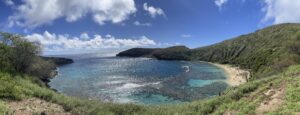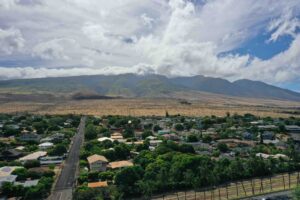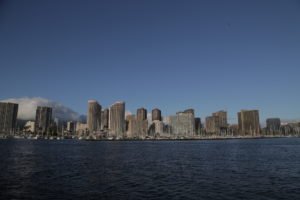BLOG POSTS ARE PRELIMINARY MATERIALS CIRCULATED TO STIMULATE DISCUSSION AND CRITICAL COMMENT. THE VIEWS EXPRESSED ARE THOSE OF THE INDIVIDUAL AUTHORS. WHILE BLOG POSTS BENEFIT FROM ACTIVE UHERO DISCUSSION, THEY HAVE NOT UNDERGONE FORMAL ACADEMIC PEER REVIEW.
By Tim Halliday
What happens to crime when 180,000 DOE students and all of their teachers are given the day off? When a fiscal crisis led to 17 “Furlough Fridays” during the 2009/2010 school year, we found ourselves in a unique position to find out. While it is tempting to imagine streets being flooded with idle teenagers up to no good, a new UHERO working paper titled “In School and Out of Trouble? Investigating the Effects of Furloughing Public School Teachers on Juvenile Crime in Hawaii” suggests the contrary.
The authors, Randall Akee (an assistant professor at UCLA), Timothy Halliday (an associate professor at UH-Manoa) and Sally Kwak (an economist at the US Congress Joint Committee on Taxation), used juvenile arrest data from the Honolulu Police Department to investigate the effects of this unusual policy on juvenile crime. Using such a policy to test the effects of shortening the school year on crime is an example of what economists call a “natural experiment;” an observational study that allows researchers to ascertain causal relationships without using a randomized trial.
Contrary to what many would have predicted, their results indicate that the furloughs were associated with fewer juvenile assault arrests for assault and drug-related crimes. Over the course of the entire academic year, there were 20 fewer arrests for assault and 15 fewer arrests for drug offenses due to the furloughs. These reductions are larger than effects produced from national studies. It is hard to say exactly why this is but the authors speculate that, since 1 in 5 students in Hawaii are in private schools, the average socioeconomic status of families who do send their children to public schools may be lower than elsewhere which may enhance the ability of school to facilitate rather than prevent crime.
Spatial differences were also identified. Assaults went down more than drug-related crimes in Leeward and Central Oahu, while drug-related crimes were reduced more than assaults in Metro and Windward Oahu. The authors attribute the reduction in crime to two factors. The first is a lack of “concentration” allowing for less opportunity to engage in criminal activity, and the second is possibly increased monitoring by parents that may have happened since parents were told about the furloughs in advance and 13 of the 17 DOE furlough days coincided with furloughs for state employees. The “concentration” effect was more prominent in Leeward and Central Oahu resulting in fewer assaults, while the monitoring effect may have been more prominent in Metropolitan and Windward Oahu where more affluent parents may have been better able to plan ahead to spend the day with their children or to arrange for a paid alternative activity.
It would be flippant to say that school should be canceled as a means of crime prevention, but the overall reduction in crime should encourage decision-makers to think harder about how to minimize crime while school is in session.
RESEARCH PAPERS ARE PRELIMINARY MATERIALS CIRCULATED TO STIMULATE DISCUSSION AND CRITICAL COMMENT. THE VIEWS EXPRESSED ARE THOSE OF THE INDIVIDUAL AUTHORS. WHILE RESEARCH PAPERS BENEFIT FROM ACTIVE UHERO DISCUSSION, THEY HAVE NOT UNDERGONE FORMAL ACADEMIC PEER REVIEW.
Abstract: Policymakers have long been concerned about the large social costs of juvenile crime. Detecting the causes of juvenile crime is an important educational policy concern as many of these crimes happen during the school day. In the 2009-10 school year, the State of Hawaii responded to fiscal strains by furloughing all school teachers employed by the Department of Education and canceling classes for seventeen instructional days. We examine the effects of these non-holiday school closure days to draw conclusions about the relationship between time in school and juvenile arrests in the State of Hawaii on the island of Oahu. We calculate marginal effects from fewer juvenile assault and drug-related arrests, although there are no changes in other types of crimes, such as burglaries. The declines in arrests for assaults are the most pronounced in poorer regions of the island while the declines in arrests for assaults are the most pronounced in poorer regions of the island while the decline in drug-related arrests is larger in the relatively more prosperous regions.





